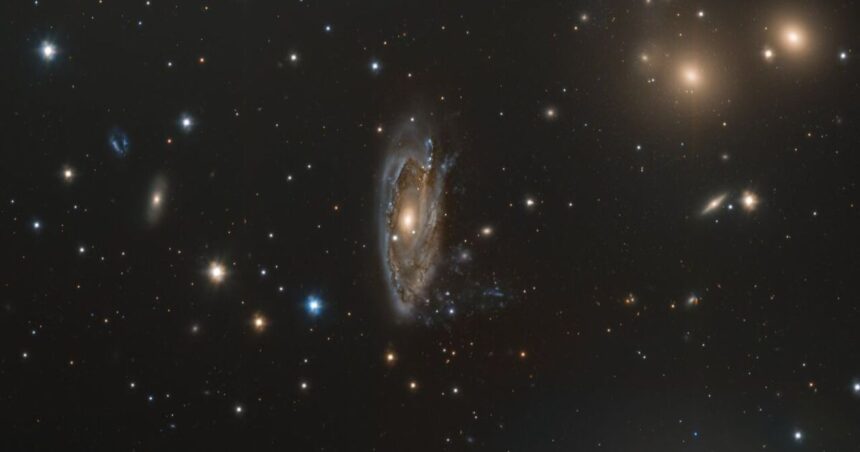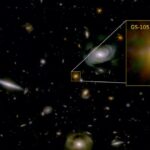Astronomers revealed a breathtaking image from the European Southern Observatory (ESO). This image shows a galaxy being robbed of its gas and stars. The galaxy, named NGC 3312, is located in the Hydra I cluster, over 160 million light-years from Earth.
The Victim: NGC 3312
NGC 3312 is a spiral galaxy. It lies within a large cluster known as Hydra I. This cluster contains hundreds of galaxies. NGC 3312 is one of the largest in this cluster. The new image from ESO shows NGC 3312 in great detail. It appears to be spilling its contents into the cosmos around it.
The process responsible for this cosmic theft is called ram pressure stripping. This happens when a galaxy moves through a dense fluid, like the hot gas between galaxies in a cluster. The hot gas drags against the colder gas on the outer shell of the galaxy. This pulls the gas off the galaxy, causing it to leak into space.
This cold gas is the raw material. It is the material from which stars form. When a galaxy loses this gas, it risks a dwindling stellar population. Over time, as more gas is stripped away, it can form long tendrils of trailing gas. Galaxies like NGC 3312 that fall victim to this process are often nicknamed jellyfish galaxies.
The Image
The image was captured using the ESO’s VLT Survey Telescope (VST) at the Paranal Observatory in the Atacama Desert of northern Chile. The image shows NGC 3312 front and center, surrounded by bright stars and galaxies. A patch of interstellar material is visible in the galaxy’s lower right corner. This suggests it is being stripped from the galaxy as it falls toward the center of the cluster.
The Hydra I Cluster
The ESO also provided a magnified image of the Hydra I cluster for context. In the photograph, between two bright spots, is the spiral galaxy NGC 3312. Beneath a large blue star captured at the center-left of the image and above a slightly smaller stellar neighbor with a golden glow, located to the bottom right of the galaxy. Numerous galaxies are shown in this wide-field picture, demonstrating the Hydra I cluster’s vastness. This cluster contains a whopping 157 bright galaxies.
The new image from ESO provides valuable insights into the processes that shape galaxies. It shows how interactions within galaxy clusters can strip galaxies of their gas and stars. This can have a significant impact on their evolution. Understanding these processes is crucial for astronomers. It helps them to piece together the history of our universe.
Editor’s Recommendations
- Sun’s Secret: Transforming Our Star into a Mega Telescope
- Milky Way’s Newborn Stars Revealed by James Webb Space Telescope
- Murder of Galaxy: James Webb Telescope Witnesses Black Hole Killing it’s Galaxy
- SpaceX Polaris: Civilians Conquer Space with Historic First Spacewalk!





